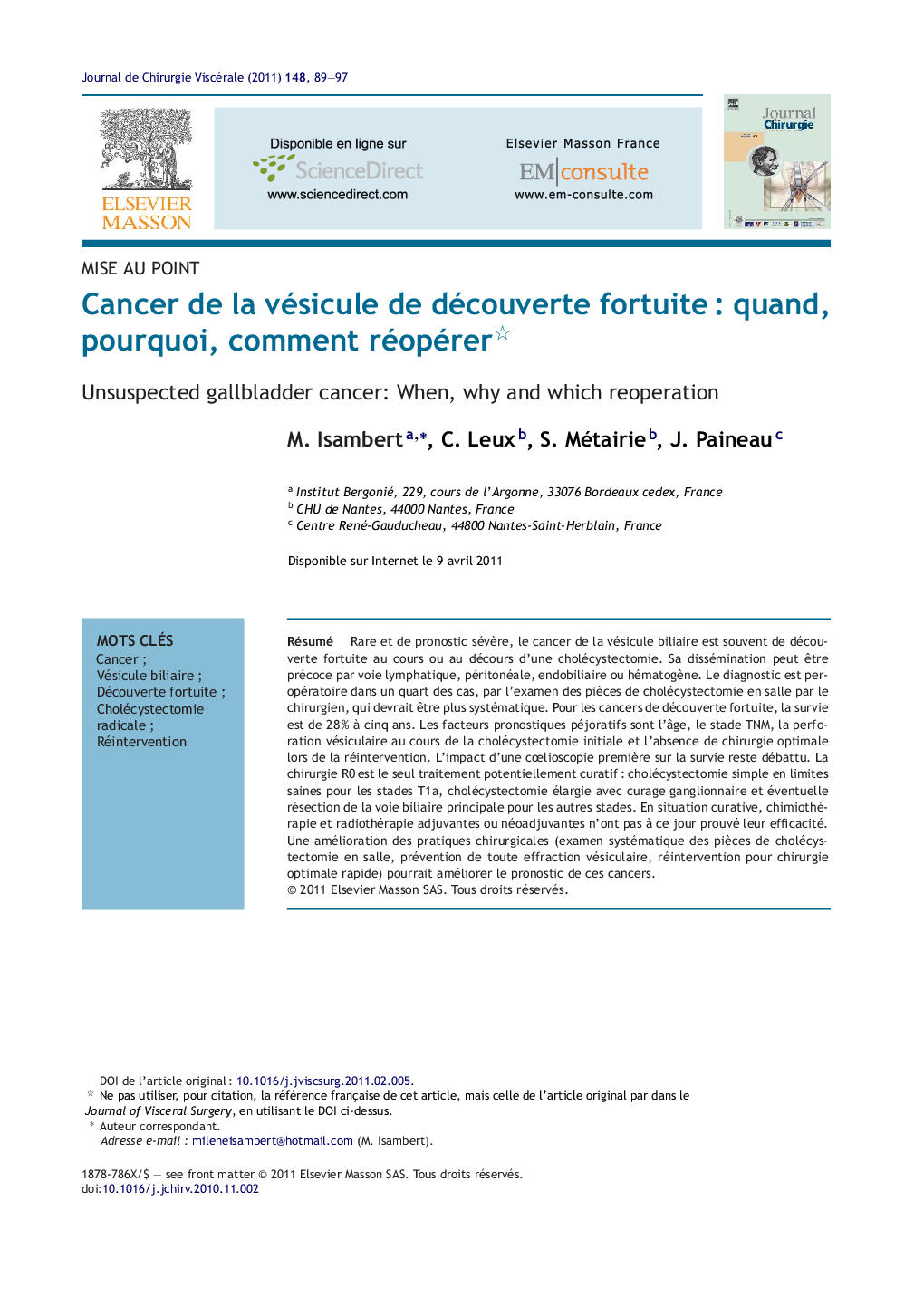| Article ID | Journal | Published Year | Pages | File Type |
|---|---|---|---|---|
| 3312182 | Journal de Chirurgie Viscérale | 2011 | 9 Pages |
Abstract
Rare and associated with a very poor prognosis, gallbladder cancer is often unsuspected preoperatively and diagnosed only during cholecystectomy. Routes of spread are lymphatic, peritoneal, endobiliary and blood. A quarter of patients are diagnosed during cholecystectomy. However, 40% of postoperative diagnosis could have been done intraoperatively, with a gross examination of the specimen by the surgeon. Five-year survival is 28%. Adverse prognostic factors are age, TNM stage, gallbladder perforation during cholecystectomy and absence of optimum surgery. Impact of first laparoscopic approach is still debated. Radical surgery is the only potentially curative treatment simple cholecystectomy with disease-free margins for T1a, extended cholecystectomy with lymph node dissection for other stages, with or without common bile duct resection. For curative treatment, indications of adjuvant treatment are still to be established. Improving daily practice (gross examination of specimen in operative room, avoiding bile spread, early reoperation for radical surgery) could improve prognosis for these cancers.
Related Topics
Health Sciences
Medicine and Dentistry
Gastroenterology
Authors
M. Isambert, C. Leux, S. Métairie, J. Paineau,
